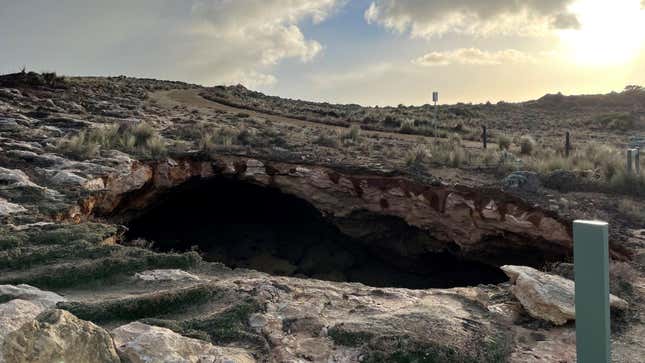
And boom goes the… earth? Residents of the seaside hamlet of Robe in South Australia awoke June 9 to find that a huge hunk of limestone had fallen inward, leaving a sinkhole in its wake.
“There’s no warning when these things give way,” James Holyman, an executive on Robe’s district council, told ABC. “It’s a fair way down and the Southern Ocean is fairly churned with big rollers [waves].” Holyman added that anyone eager to ogle the hole should give it a wide berth. “If you went in there, you’d be sucked out into the ocean,” he said.
It’s also worth steering clear because sinkholes can beget sinkholes. This particular void formed in Australia’s Limestone Coast, a 26-million-year-old stretch of porous rock deposits along the continent’s southern coast. The bit of rock where the sinkhole formed is about 200,000 years old, according to Patrick Hesp, a coastal geomorphologist at Flinders University in Australia who was interviewed by ABC.
Limestone has a propensity for falling out (along with other carbonate and evaporite rocks) because they easily dissolve in water. Hesp told ABC that South Australia’s recent rainfall and heavy ocean swells probably contributed to the sinkhole’s formation. When there’s no place for the rain to drain—in this case, when the rock is already inundated—the rock dissolves and empty pockets form. Recently, heavy rains in India made a car vanish into a sinkhole directly from its parking spot; the situation in Australia is geologically similar, though this new sinkhole is bigger: “the size of half a tennis court,” according to ABC.

While the town of Robe faces no immediate danger from the sinkhole, a Victorian-era obelisk could be at risk. The monument sits dangerously close to the cliff’s edge as it is and was already threatened by erosion in the area prior to the most recent sinkhole’s appearance. The obelisk once housed rockets to guide distressed ships to shore.
In a Facebook post, Robe’s district council called the sinkhole a “woe hole.” While I’m not exactly sure where that terminology comes from, it’s certainly a poetic way to describe the new cavity, which, while large, is no where near the biggest one on record; the “Heavenly Pit” in China is over 2,000 feet wide and 2,000 feet deep.